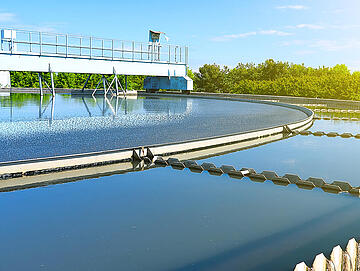
Summer Wave: Wastewater Figures Speak a Clear Language
Mon 20 Jun, 2022
Summer Wave: Wastewater Figures Speak a Clear Language
Presentation of intermediary results from the CoMoTH Project for wastewater monitoring: SARS-CoV-2 viral load is reliably depicted with recognizable trends / Recommendation at the Thuringia Cluster Management LEG workshop: “Monitoring should be implemented throughout the entire state to fully grasp the infection situation” / Infrastructure to be used for other pathogens
Jena, June 20, 2022 – The wastewater data have clearly shown that the pandemic is not yet over. This confirms the statement issued by Federal Health Minister Karl Lauterbach (SPD), according to which the summer wave is already underway. The numbers reported by the health authorities reflect this reality only to a limited extent, as fewer individual tests have been carried out since preventative measures have been lifted. The data from the Thuringian CoMoTH project speaks for itself, as in this graph, which depicts the course of viral concentration using the example of the Jena wastewater treatment plant.
“The example clearly illustrates how the concentration of SARS-CoV-2 gene copies in the wastewater corresponded with the reported data a few days in advance – up until preventative measures were lifted. However, the results have been drifting apart since April: The concentration of SARS-CoV-2 gene copies in wastewater has recently increased sharply again, while reported cases have not reflected the trend,” explained Dr. Robert Möller, project manager at Analytik Jena.
These and other intermediary results and insights from the CoMoTH Project were presented at a June 20, 2022 workshop held in Erfurt by the Thuringia Cluster Management of Landesentwicklungsgesellschaft Thüringen mbH in collaboration with the Bauhaus University of Weimar and the InfectoGnostics research campus. This involved 23 wastewater treatment plants and thus roughly 40% of the Thuringian population. The network partners included the Bauhaus University of Weimar and Analytik Jena GmbH. One of the declared research goals of the CoMoTH project is to explore the possibilities of comprehensive and permanent wastewater monitoring of SARS-CoV-2 in the state.
Results so far have shown that
- the detection of pathogens in wastewater is, in principle, possible and useful.
- the wastewater data are usually days ahead of case incidence over time, so that they can be taken into consideration as a monitoring system
- wastewater data clearly reflects the clinical course of the pandemic in its ups and downs
- the transition from one wave to another (Delta to Omicron) can be seen in the results
- the clinical infection numbers have drifted from the results measured in wastewater since the pandemic management has been relaxed: Fewer tests and thus fewer cases reported by the RKI have coincided with a consistently high or even increasing trend in wastewater results.
The CoMoTH project is planned to end in August 2022. As Prof. Silvio Beier of the Bauhaus University of Weimar explained: “On the basis of the project results, monitoring can now be implemented in Thuringia to follow future infection developments in a timely manner. It also serves as an additional decision-making aid for health services to decide whether measures need to be taken and to understand the effects of current measures. The CoMoTH research project established important framework conditions so that the further development of the system makes good sense, not only in relation to the SARS-CoV2 pandemic, but also with regard to future challenges in the fields of water and health.”
It can now generally be observed how wastewater-based epidemiology (WBE) based on PCR tests has been gaining ground, with a potential that is only beginning to be recognized. Monitoring for other viruses (hepatitis, polio, norovirus, and influenza viruses), bacterial pathogens (salmonella, clostridia, legionella), and for the spread of antibiotic resistance is all conceivable. COVID monitoring at wastewater treatment plants has provided this development with a boost all around the world.
Black line: 7-day case incidence as reported to the RKI
Blue line: moving average (past 7 days) of the detected concentration of SARS-CoV-2 gene copies in the wastewater (for preliminary orientation)
